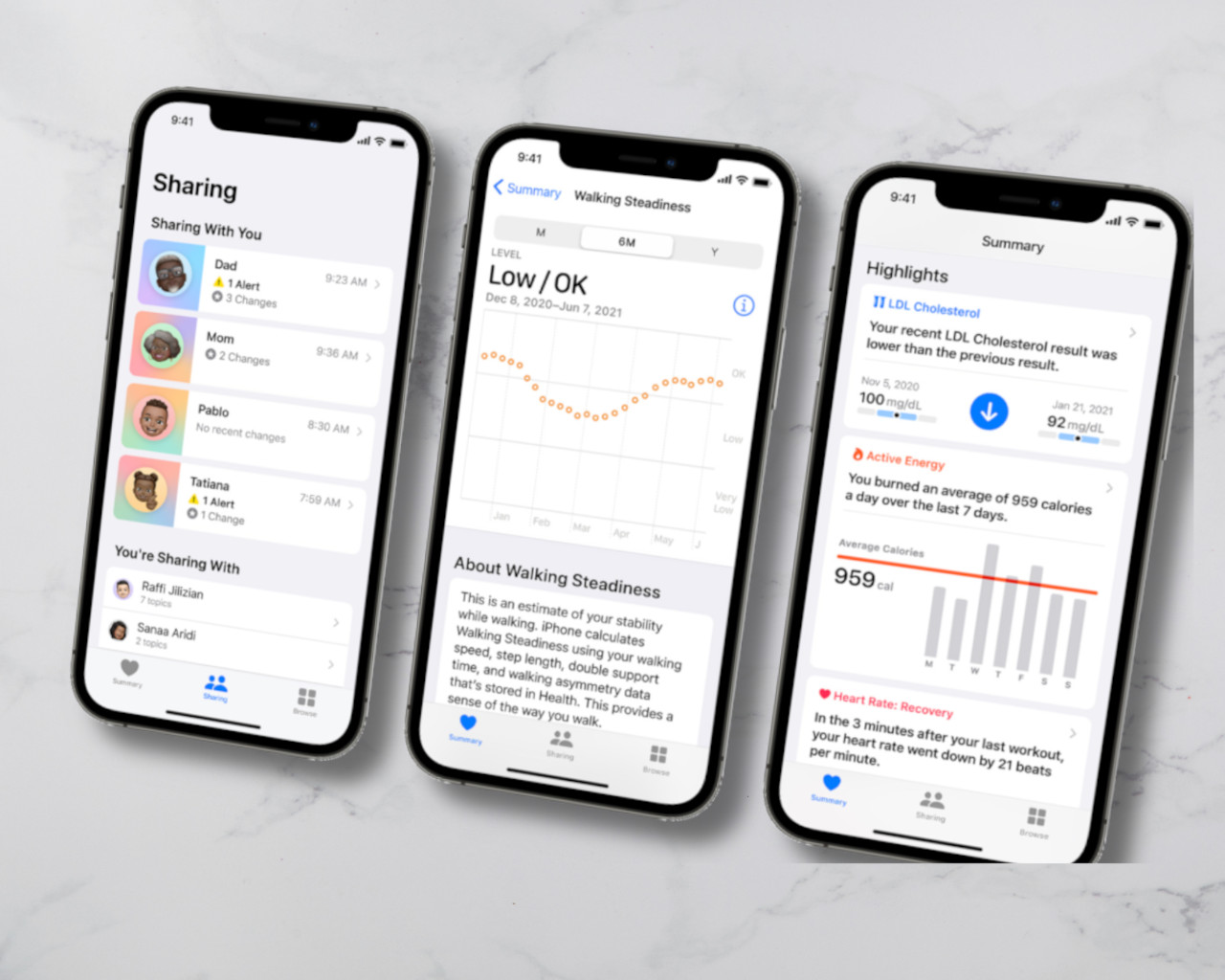Apple has unveiled the latest features in iOS 15, offering iPhone and Apple Watch users the ability to share their health data with trusted individuals, access valuable health insights, and measure their walking steadiness. These advancements in consumer health and wellness aim to provide users with a comprehensive set of tools to support their loved ones. With iOS 15, users can securely share their health data with family members or healthcare professionals, gain valuable insights into the health trends of their loved ones, and utilize new tools to identify and understand changes in personal health data. This demonstrates Apple’s commitment to continuously improving and expanding its innovative health features.
- The Apple Watch facilitates health-sharing capabilities.
- Health app trends in Apple Watch
- The Apple Watch assists in assessing and monitoring walking steadiness.
- Privacy is a key aspect of the Apple Watch.
- Apple Watch introduces further enhancements in health and wellness features.
The Apple Watch facilitates health-sharing capabilities.
With the introduction of iOS 15, users are empowered to securely share their health and wellness data with their loved ones, allowing for more meaningful conversations and remote support. The Health app now features a dedicated Sharing tab, enabling users to privately share their data with trusted partners or caregivers. Users have full control over which specific data they share and with whom they share it. This flexibility caters to various scenarios, such as aging parents sharing activity and heart health data with family members, partners sharing fertility window insights, or individuals with Parkinson’s disease sharing mobility data with their physical therapists. The shared data is presented to the recipient with important insights and trends highlighted, facilitating a comprehensive understanding.
Meaningful discussions with doctors about daily activities are crucial for effective health management. However, remembering all the details can be challenging. The Health app addresses this issue by allowing users, with their permission, to track valuable information, bridging the gap between clinic appointments. In the United States, users now have the option to share specific types of health data, such as heart rate, detected falls, sleep duration, or exercise minutes, with their doctors. This facilitates more informed conversations during medical visits. Participating healthcare organizations can directly review the health data shared by users within the electronic health records system, streamlining the information exchange process.
Overall, iOS 15 revolutionizes the sharing of health data, enabling users to strengthen connections with their loved ones and healthcare providers. The enhanced capabilities of the Health app empower individuals to take control of their health management, fostering collaboration and facilitating more personalized care.
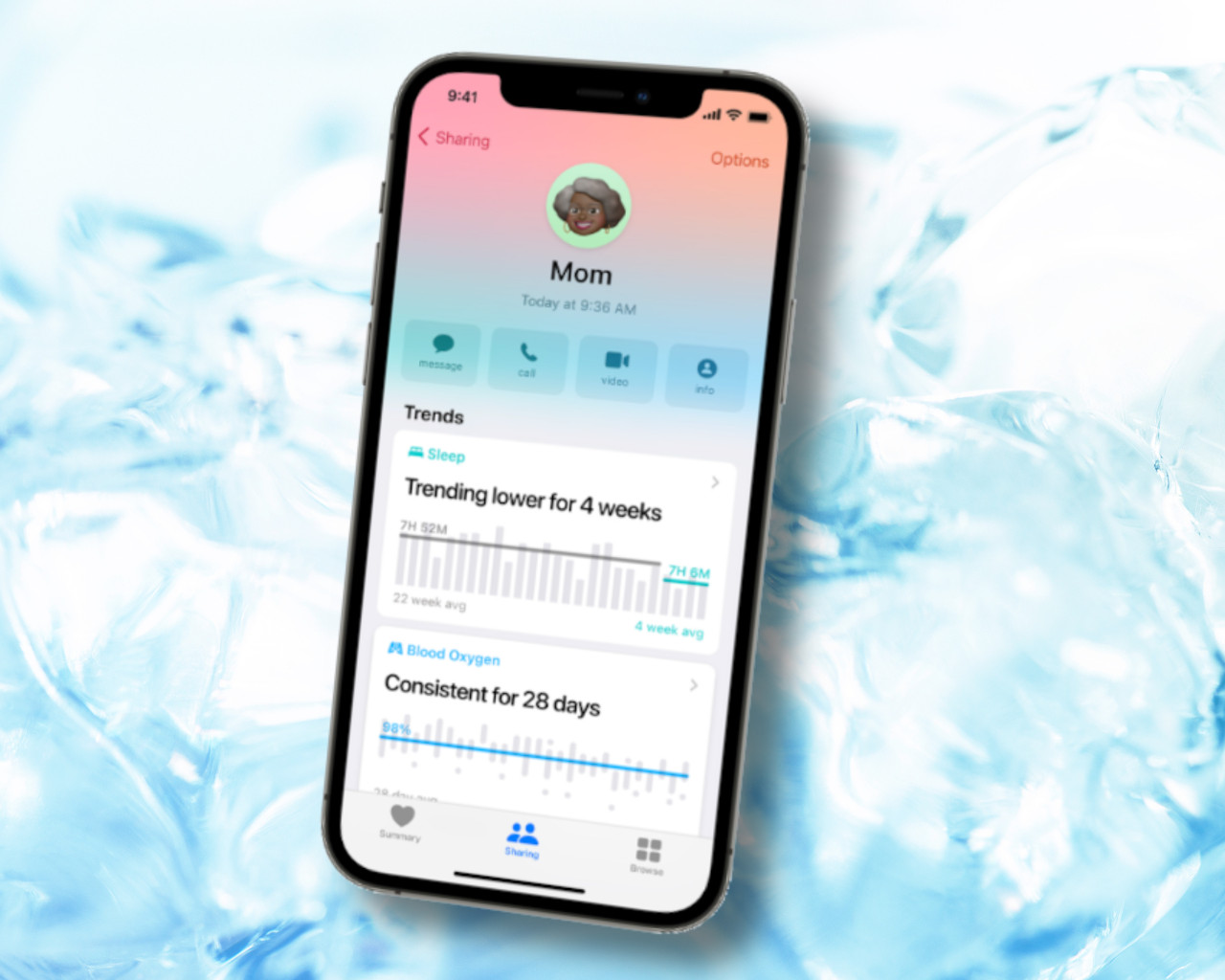
Health app trends in Apple Watch.
The Health app now incorporates trend analysis for a wide range of data, encompassing 20 different metrics such as resting heart rate, sleep patterns, and cardio fitness. This feature enables users to effortlessly track the progress of specific health indicators. Monitoring changes in health is a critical aspect of personal well-being, as these changes can be subtle and easily overlooked. To address this, the introduction of Trends provides users with an intelligent and proactive method of highlighting significant changes and presenting the information in a user-friendly manner.
In addition to tracking overall trends, users can set and monitor specific goals, such as increasing running distance or mindful minutes. The trend analysis feature extends its functionality to cover insights from third-party devices connected to the Health app, enabling users to monitor various aspects of their health, including insulin delivery. By leveraging optional notifications, Trends can draw attention to long-term changes in health, allowing users to celebrate progress toward their goals or engage in meaningful discussions with their healthcare providers.
The inclusion of trend analysis in the Health app enhances the ability to monitor and understand personal health data over time. Users can gain valuable insights into their progress, identify areas for improvement, and make informed decisions to optimize their well-being. This feature serves as a valuable tool in empowering individuals to take an active role in managing their health and collaborating with their healthcare teams.
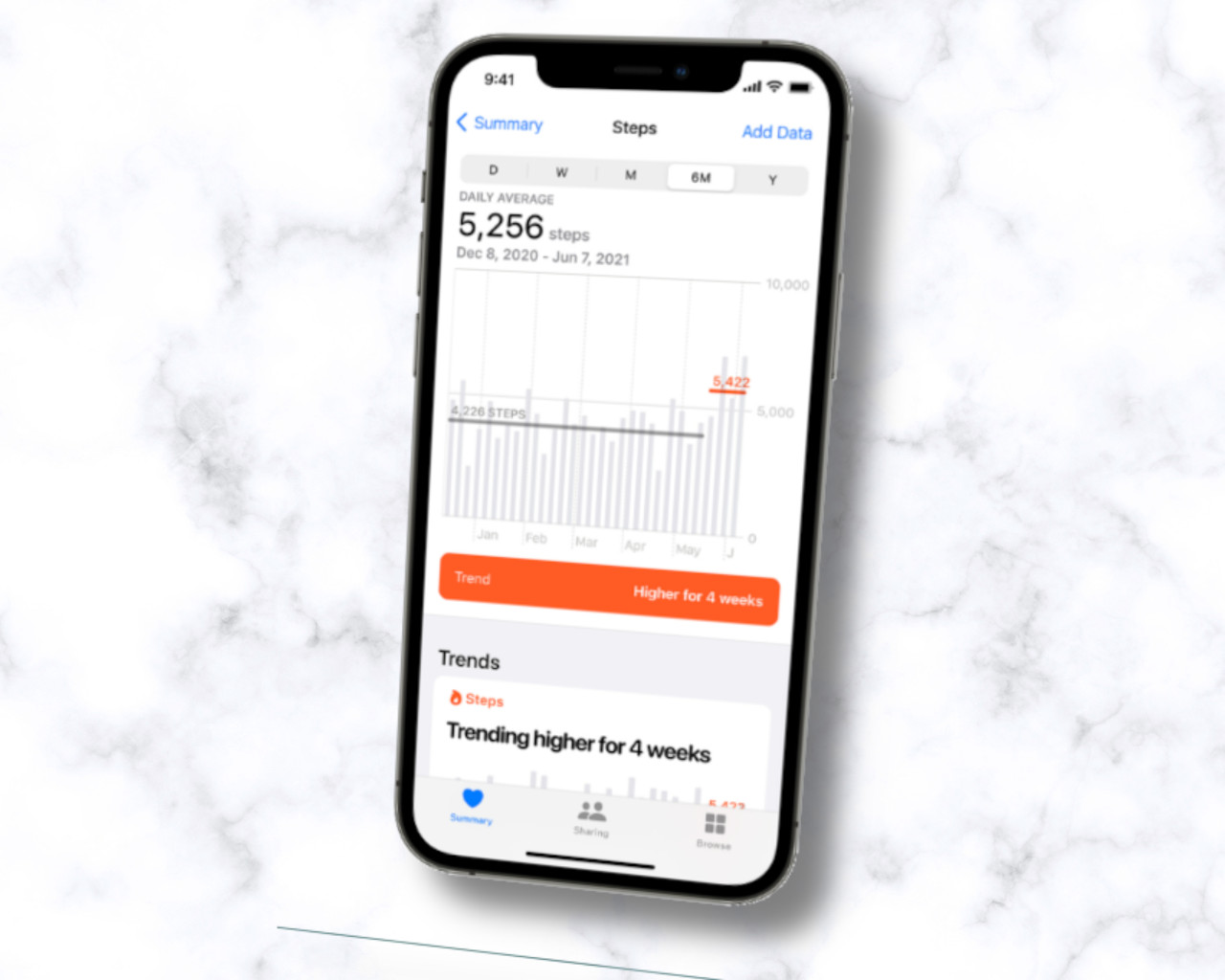
Trends allow users to effortlessly track the progress of specific health metrics over time.
The Apple Watch assists in assessing and monitoring walking steadiness.
Every year, more than 37 million individuals seek medical attention due to falls, which can have severe consequences, including the onset of serious conditions and a loss of independence. To address this issue, Apple has introduced a groundbreaking feature called Walking Steadiness on iPhone, revolutionizing the way fall risks are assessed. By utilizing the motion sensors built into the iPhone, Walking Steadiness captures essential mobility data as users go about their daily walks. This innovative approach replaces the traditional method of fall risk assessment, which typically involves questionnaires and in-person evaluations conducted by healthcare providers.
Walking Steadiness employs custom algorithms to evaluate balance, stability, and coordination based on the gathered data. This pioneering metric has been developed using real-world information obtained from the extensive Apple Heart and Movement Study, involving over 100,000 participants across all age groups. With the largest dataset ever utilized for studying fall risks, Walking Steadiness provides valuable insights into an individual’s likelihood of falling.
Beyond simply identifying potential fall risks, Walking Steadiness also helps users work towards their stability goals. Users have the option to receive notifications when their score indicates a low or very low steadiness level. These notifications guide users to a curated selection of visual exercises that have been clinically validated to enhance strength and balance.
By empowering users with knowledge about their fall risk and offering personalized exercises, Walking Steadiness enables individuals to take proactive measures in reducing their chances of falling. This feature not only raises awareness but also provides practical tools to enhance stability and maintain independence. Apple’s commitment to leveraging technology for the benefit of user health and well-being is demonstrated through the introduction of Walking Steadiness on the iPhone.
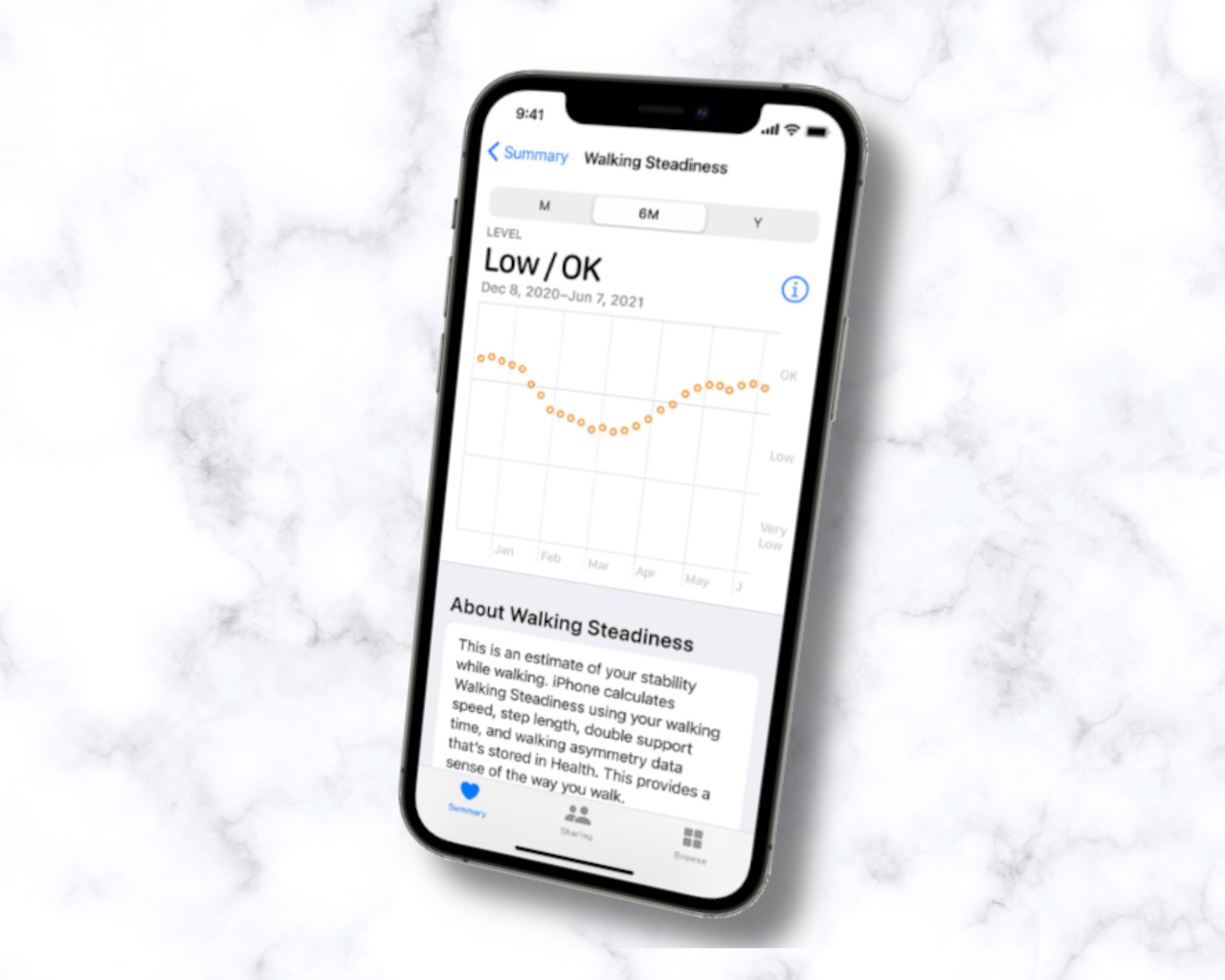
Privacy is a key aspect of the Apple Watch.
Privacy is a core principle that Apple upholds in the creation and advancement of its health-related functionalities. The protection of health data is paramount, with users maintaining full authority over which specific types of data they opt to disclose and to whom. Robust encryption measures are employed to safeguard data both during transmission and when stored on a user’s device, securely locked behind a passcode, Face ID, or Touch ID. Importantly, when users decide to share their health information with trusted individuals, such as loved ones or healthcare professionals, Apple does not possess any access to this shared data. By prioritizing privacy, Apple ensures that users have complete control over their health data, fostering trust and confidence in the use of its health features.
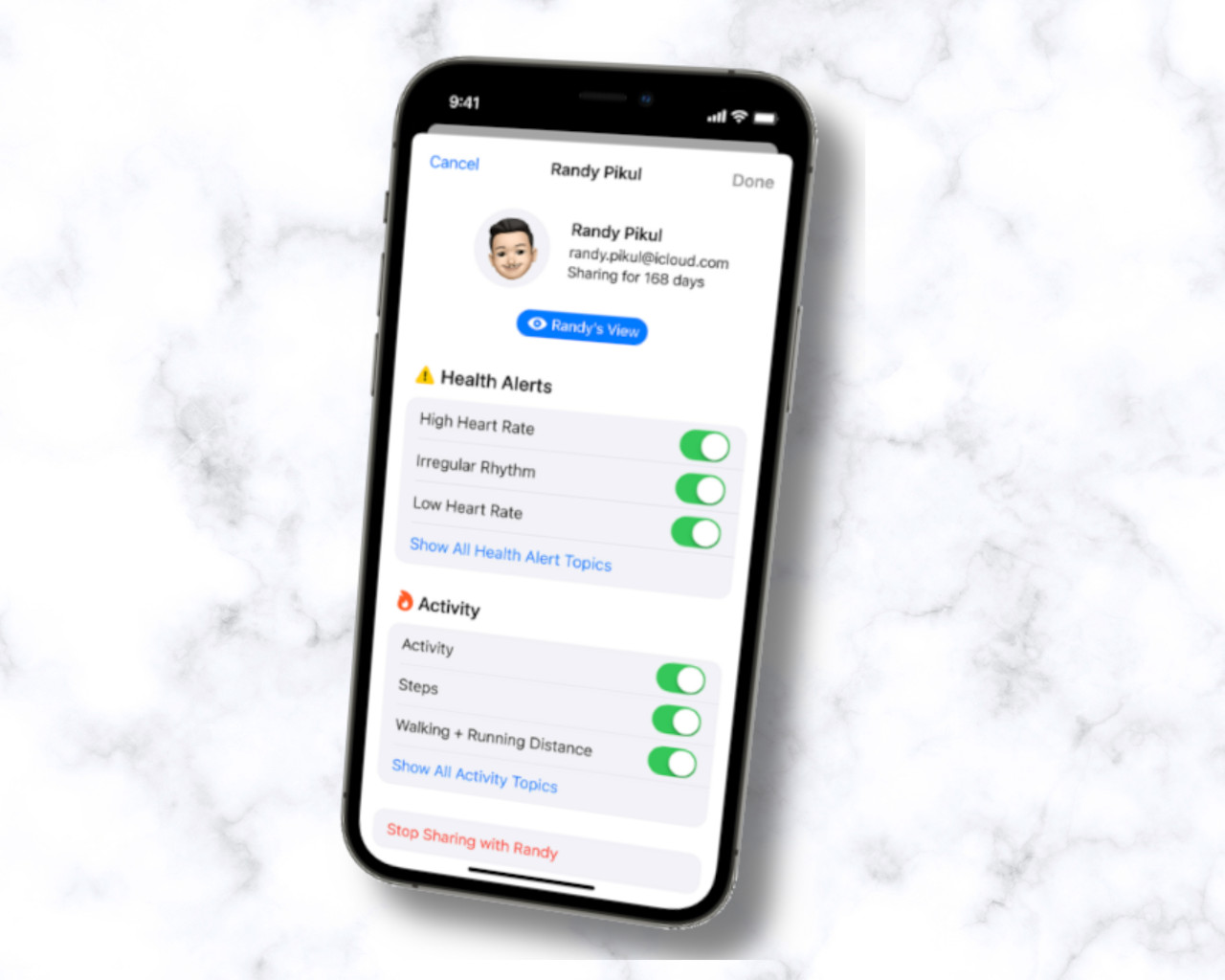
Apple Watch introduces further enhancements in health and wellness features.
- An enhanced laboratory experience has been introduced to the Health Records feature on iPhone, streamlining the process for users to review their test results. Users now have the ability to view key highlights, mark important results, assess if the lab values are within the expected range, and access educational resources regarding common lab tests. This enhancement ensures that users can easily navigate and understand their medical information.
- With the introduction of watchOS 8, the Apple Watch now includes a feature that measures the respiratory rate, which refers to the number of breaths per minute, during sleep. Users can conveniently access this information in the Health app and receive notifications if any meaningful trends are detected. This feature provides valuable insights into sleep patterns and respiratory health.
- The new Mindfulness app in watchOS 8 offers a refreshed deep breathing experience and additional tools to promote a centered and calm state of mind. Breathe sessions are designed to help users slow down, and concentrate, and now include an engaging animation. Moreover, users can engage in Reflect sessions, a new mindfulness feature that aids in focusing on positive thoughts, further enhancing the overall mindfulness experience.
- In iOS 15, users worldwide are now provided with an additional option to store their medical records, including immunizations and test results, directly in the Health app. This feature is particularly useful for situations where a healthcare provider or medical facility may not currently support the Health Records functionality. Users can easily download verifiable records of COVID-19 vaccinations or test results from an online browser or QR code, ensuring convenient and secure access to their important medical information at any time.

